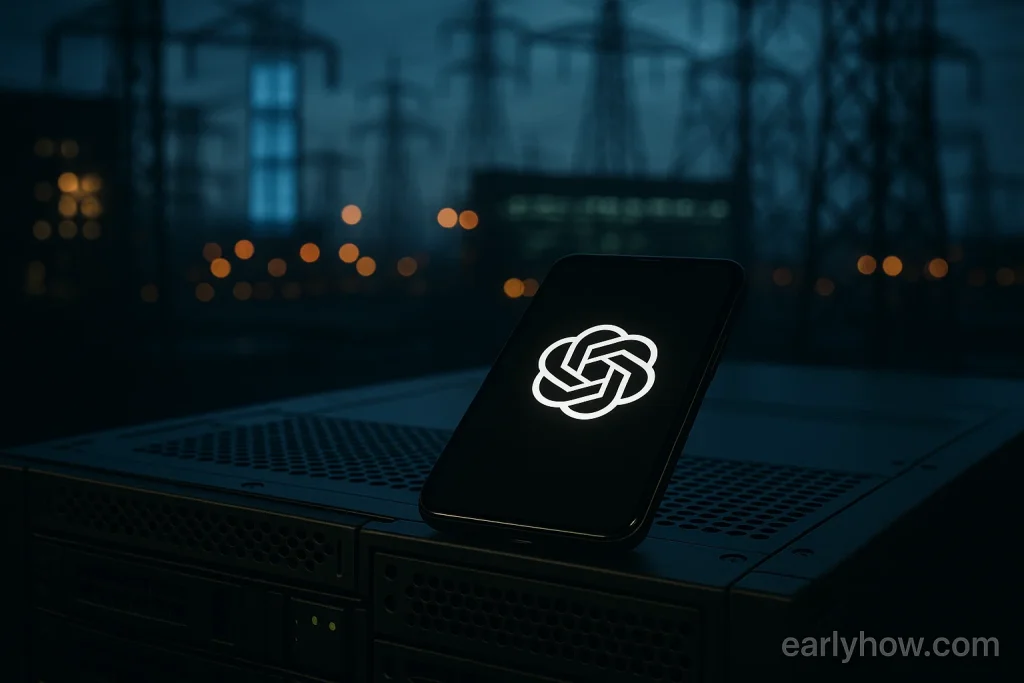OpenAI is going big on infrastructure—very big.
The company is now investing billions into building a nationwide network of custom AI data centers, part of a strategy to support its most advanced models and prepare for the next generation of artificial intelligence systems.
Interested in the best tools powered by models like ChatGPT, Gemini, Claude, and others? Explore the full list of today’s most powerful AI platforms here:
See Top AI Tools → earlyhow.com/tools
Why OpenAI is Building Its Own AI Data Center Network
According to recent reports, OpenAI has reviewed nearly 100 property sites across the U.S. to identify future locations for high-performance computing hubs. The company is focused on land, electricity access, and speed to deployment—key factors in scaling AI infrastructure quickly and efficiently.
The initiative is being led by Brad Lightcap, OpenAI’s COO, who confirmed the strategy is about gaining more control and reducing costs in the long run.
“We’re past the stage of borrowing infrastructure. This next phase is about building our own AI backbone,” said one executive familiar with the expansion plans.
Aiming to Support the Next Generation of AI
As OpenAI’s models become more capable, they also demand more power. Future systems like GPT-5 or other multimodal agents will need massive compute clusters to run safely, securely, and cost-effectively.
To meet these demands, OpenAI is:
- Designing new AI-optimized supercomputing facilities
- Exploring partnerships with renewable energy providers
- Developing proprietary hardware integrations
- Evaluating U.S. states based on incentives, build time, and stability
The new infrastructure will likely support OpenAI’s growing cloud services and commercial offerings, including enterprise-grade APIs and private deployments.
Why OpenAI Isn’t Just Renting From Big Cloud Providers
Until now, OpenAI has worked closely with Microsoft Azure for most of its training infrastructure. But this new approach signals a shift toward first-party control—reducing reliance on third-party platforms, optimizing energy costs, and protecting intellectual property.
It also allows OpenAI to:
- Move faster than traditional cloud procurement cycles
- Customize hardware setups around specific model needs
- Align site selection with long-term safety and governance goals
What This Means for the AI Race
With this expansion, OpenAI is no longer just a model maker—it’s becoming an AI infrastructure company.
The firm now competes with the likes of Amazon, Google, and Nvidia—not just on algorithms, but on the physical backbone of artificial intelligence. Whoever controls compute, controls the pace of AI evolution.
Industry experts say this move may give OpenAI an edge in:
- Accelerated model development timelines
- AI safety experimentation environments
- Hardware and chip-level innovation at scale
Final Thoughts
OpenAI’s infrastructure investment is about more than data centers—it’s about creating the engine room for the future of AI.
As models get more powerful, controlling compute becomes a strategic advantage. And with billions behind this effort, OpenAI is positioning itself not just for scale—but for leadership.
What’s your take on OpenAI building its own AI server empire?
Should companies like this go all-in on custom infrastructure, or keep using public cloud?
Drop your thoughts in the comments—we’re tracking the full debate.
Follow EarlyHow.com for continuous coverage on AI tools, infrastructure, and the future of intelligent systems.



